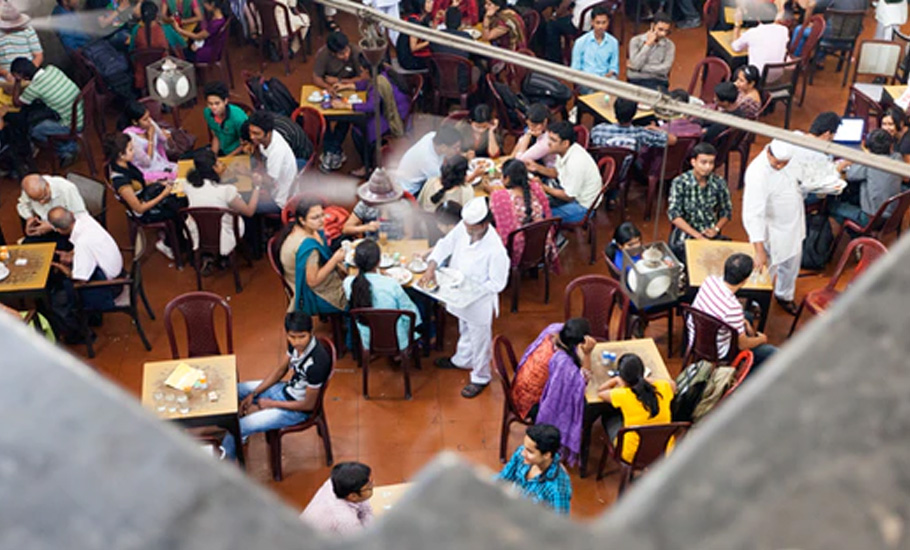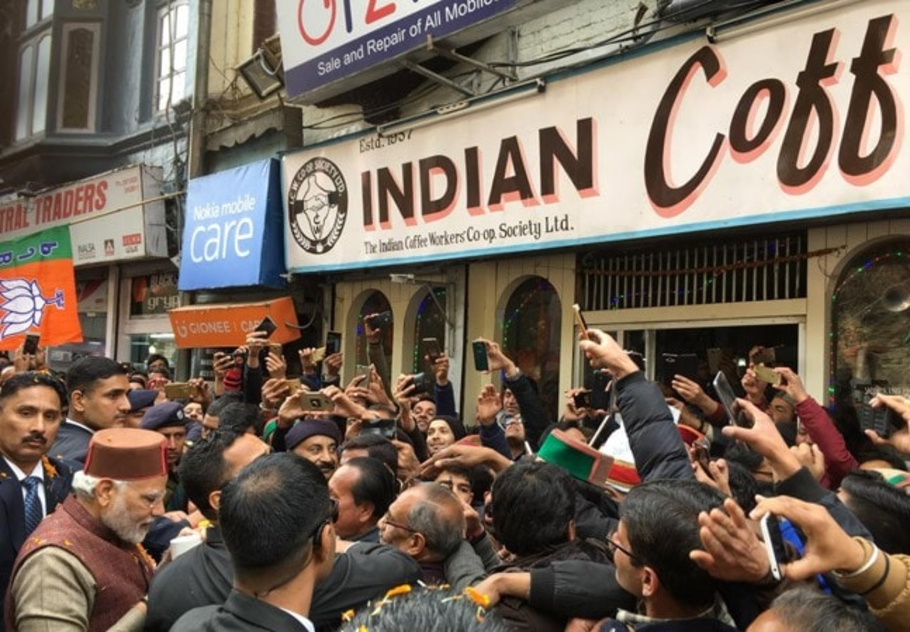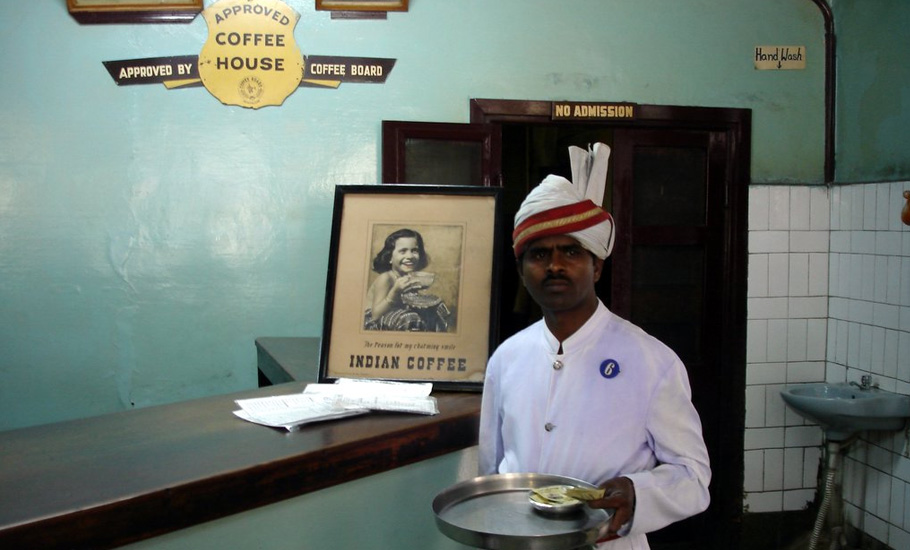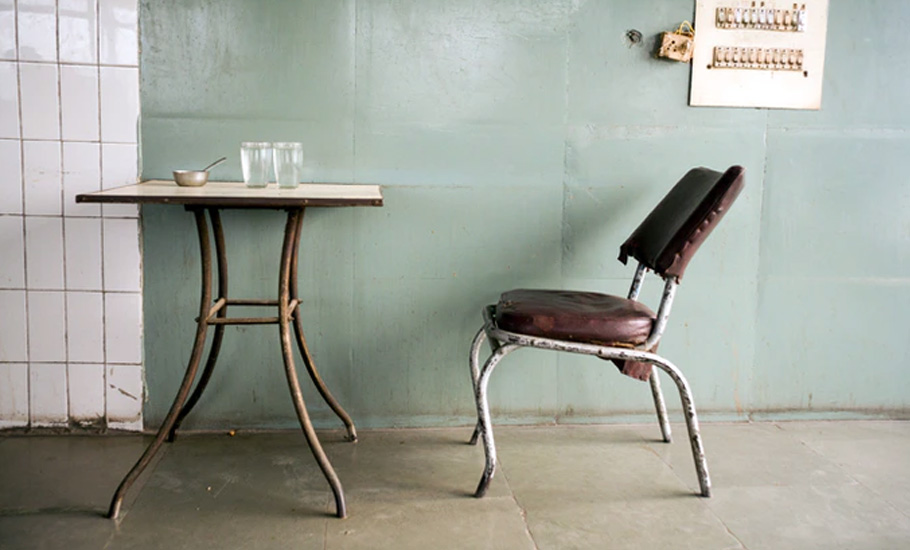
- Home
- India
- World
- Premium
- THE FEDERAL SPECIAL
- Analysis
- States
- Perspective
- Videos
- Sports
- Education
- Entertainment
- Elections
- Features
- Health
- Business
- Series
- Bishnoi's Men
- NEET TANGLE
- Economy Series
- Earth Day
- Kashmir’s Frozen Turbulence
- India@75
- The legend of Ramjanmabhoomi
- Liberalisation@30
- How to tame a dragon
- Celebrating biodiversity
- Farm Matters
- 50 days of solitude
- Bringing Migrants Home
- Budget 2020
- Jharkhand Votes
- The Federal Investigates
- The Federal Impact
- Vanishing Sand
- Gandhi @ 150
- Andhra Today
- Field report
- Operation Gulmarg
- Pandemic @1 Mn in India
- The Federal Year-End
- The Zero Year
- Science
- Brand studio
- Newsletter
- Elections 2024
- Events
- Home
- IndiaIndia
- World
- Analysis
- StatesStates
- PerspectivePerspective
- VideosVideos
- Sports
- Education
- Entertainment
- ElectionsElections
- Features
- Health
- BusinessBusiness
- Premium
- Loading...
Premium - Events

How Indian Coffee House is fading into history it once hosted
A hub of political and economic discussions and hotter debates, a second home for journalists, a classroom for students and a paradise for artists, that is what Indian Coffee House is.

A group of men, sitting on a table, having a sip of coffee and debating on whether the current government is performing well or not. Their masala dosa and cheese omelettes arrive and give more fodder for debate. In some corners, couples sitting and enjoying their coffee and noodles. Families or college students dropping in to enjoy a quick bite. This has been the usual scene in any of...
A group of men, sitting on a table, having a sip of coffee and debating on whether the current government is performing well or not. Their masala dosa and cheese omelettes arrive and give more fodder for debate. In some corners, couples sitting and enjoying their coffee and noodles. Families or college students dropping in to enjoy a quick bite. This has been the usual scene in any of the over-400 Indian Coffee House across the country that were like a second home to many for decades.
But that may not be the case when they decide to revisit their favourite hangout even after the Covid-19 restrictions are lifted, at least in Shimla.
Mohan Kathuria, a regular at the Indian Coffee House in Shimla, says, “I have been coming here for the last 40 years. I started drinking coffee here when it was 50 paisa and now it is Rs 25. The place had perfectly restored our past. There are new coffee houses but this one was unique. We feel like we came back to our good old time while visiting this coffee house. We are very disappointed to learn that the coffee house is closing.”
Shimla’s Indian Coffee House recently declared that they have not been able to pay employees’ salaries for the last 10 months and would be shutting down soon. Atma Ram Sharma, its manager, says there are many bills pending to pay.
The employees are not motivated enough to keep working without any salary. They have their family dependencies as well. The Covid-19 lockdowns have impacted us a lot. Even if the coffee house is run for a year with full capacity, they would not be able to repay the entire debt, he says.
“There are at least 14 other Indian Coffee Houses in Chandigarh, Delhi, Kolkata, Allahabad, Lucknow among others which are on the verge of closure,” says Sharma.
“With new eateries and cafes coming up, people are also preferring them instead of us,” he sums up the story.
Door to history
In the new world of cafes and eateries sprouting up on every major street in India, be it Connaught Place in Delhi, Church Street in Bangalore, Mall Road in Shimla or Churchgate in Mumbai, the Indian Coffee House is a place where time stops. Located in pre-independence structures, with stewards wearing white uniforms with either a turban or a Gandhi cap, the Indian Coffee House is the door to history.
A hub of political and economic discussions and hotter debates, a second home for journalists, a classroom for students and a paradise for artists, it is not just a coffee house, it is a feeling, is how Nobel laureate Amartya Sen describes the Indian Coffee House.

Add to that, with idli, vadas, dosas, omelettes, pakodas, parathas, fried rice and noodles, with a cup of coffee, all at an affordable price, it had a different charm that would hook on the average urban man.
Coffee arrived in India in the 16th century during the Mughal period, when it was enjoyed by the kings and upper-class mostly. The poor did not have much idea about it.
Things changed when the British took over, and made coffee the most fashionable thing. Indians developed a desire to try the goras’ drink. As a result, in Tamil Nadu, the famous ‘kaapi’ replaced ‘kanji’ (rice gruel) as an early morning drink, much to the dislike of Mahatma Gandhiji.
A letter from an edition of Gandhiji’s Young India in August 1921 says, “The greatest obstacle in the way of success to our [non-cooperation] movement in Madras is our women. Some of them are very reactionary, and a very large number of the high-class Brahman ladies have become addicted to many of the Western vices. They drink coffee not less than three times a day and consider it very fashionable to drink more.”
North Indians, who used to like tea, started developing a taste for coffee later and became fond of it, but not as much as the Madrasis.
Coffee for all
The first Indian Coffee House was started by the Indian Coffee Board in Churchgate, Mumbai, in 1936. With intellectuals, freedom fighters and like-minded people frequenting it, its popularity grew so much that the Coffee Board started more such outlets, and by 1950, there were 72 in the country.
But that was also the year the coffee houses were shut down by the board, as it had run into huge losses and got little policy support.
When 850 workers were left unemployed and started protesting, communist stalwart AK Gopalan advised them to make it a workers’ cooperative and run it without any management.
This marked the beginning of a unique workers’ venture, with the first new Indian Coffee House being opened in New Delhi in 1957. Others in Shimla, Bangalore, Tamil Nadu and Kerala soon followed suit. Today, there are more than 400 outlets in India, all managed by 13 cooperatives and one national umbrella organisation, but all elected by employees.
Kerala alone is home to 51 Indian Coffee House outlets – the highest among all states. The state of West Bengal is also home to many Indian Coffee House outlets, with its most famous on College Street, Kolkata. Shimla has its coffee house between the oak trees and the pristine Mall Road. There used to be 12-13 outlets in Delhi as well.

Leaders’ hangout
All top leaders such as Gandhiji, Jawaharlal Nehru, Subhas Chandra Bose, freedom fighters and others, including Prime Minister Narendra Modi have graced Indian Coffee Houses with their presence. In fact, Modi had visited the Shimla outlet, that is shutting down, in December 2017.
Gandhiji had met freedom movement leaders Gopal Gokhale, Narendranath Sen and Prafulla Chandra Ray, before his address to the public in 1902, at Albert Hall in Kolkata, which later housed the Indian Coffee House since 1942.
The coffee house in Kolkata also hosted Netaji Subhash Chandra Bose film directors like Satyajit Ray, Nobel laureate Amartya Sen, Aparna Sen, Manna Dey, Mrinal Sen, Goutam Ghosh among others.
In the 60s and 70s, the Indian Coffee House hosted prime ministers Jawaharlal Nehru, Lal Bahadur Shastri, Indira Gandhi, IK Gujral other prominent people such as HN Bahuguna, Harivansh Rai Bachan, Janeshwar Mishra and Sumitra Nandan Pant.
Shimla’s Indian Coffee House also hosted late Prime Minister Indira Gandhi, former Deputy Prime Minister LK Advani and BJP veteran Murli Manohar Joshi. Former Afghan President Hamid Karzai was a frequent visitor too to the café.
“The Delhi Indian Coffee House became a home for intellectuals between 1957 to 1975 where eminent writers used to talk. There were writers who met in the house every evening and used to spend hours discussing literature,” says Ashok Kumar, a Hindi Literature writer.
Gabar Singh Gusain, ex-general manager of Indian Coffee House, says, “The Indian Coffee House has a unique history associated with it. I still remember Indira Gandhi used to give us catering orders for coffees and sandwiches. Many other leaders used to like our coffee. The coffee had a universal taste. So wherever they used to go in India, they went to our coffee house.”
“Not only leaders, writers, social workers, writers, artists and journalists, everybody used to come to Indian Coffee House,” he says.

The fade begins
“The atmosphere was very intellectually charged up. The leaders of the opposition also used to come there. They used to have debates over coffee. The place was full of ideas and possibilities. If I need to tell you in one sentence, the place was ‘JNU of the 70s’ which the government used to fear because of the intellect of people in the house,” says Ashok Kumar.
While the coffee house as a space of political deliberation has been a common feature across the globe, there are few historical cases in which one can analyse the role of such face-to-face political deliberation under totalitarian moments in heretofore democratic states, writes Kristin Plys, a sociology scholar in one of her researches.
In 1975, when the Prime Minister Indira Gandhi was convicted of corrupt election practices, rather than conceding to the high court ruling, she suspended the constitution and installed herself as India’s sole political authority. Emergency was enforced in India.
“The Indian Coffee House in New Delhi became the key site of resistance to the Emergency (1975-77). The totalitarian moment pushed contentious politics into the Coffee House, initially galvanizing it: even the older members of Indira Gandhi’s Congress Party, who were active participants in India’s Freedom Movement, were key participants in coffee house deliberations,” writes Kristin.
She says, “Eventually, however, the Indian Coffee House was bulldozed and political deliberation crushed. The space of the coffee house may foster political deliberation among different viewpoints, but when the interaction is concentrated in one such space, it becomes easier for the state and its agents to suppress oppositional politics and more difficult for both establishment and oppositional politics themselves to retain a diversified public sphere character.”
“After the Emergency, when Indian Coffee House started again, it was not a very happening place. In the space it had provided, the character of Indian Coffee Houses was not there even after renovations. It still operates from the same place, but it never attained the historical popular support,” says N Shrivastava, former manager of Delhi’s Indian Coffee House.
A similar change happened at Bangalore’s Indian Coffee House where it lost a property case in Karnataka’s High Court and eventually had to shift in 2009.

Covid-19 without coffee
However, like every other business, the Covid-19 pandemic and the two lockdowns have hit the operations and the workers of Indian Coffee House hard.
Gabar Singh Gusain says the coffee house is a workers cooperative. “Whatever they earn, they keep with them, there is complete transparency. If one worker is at a loss, the entire organisation is at a loss.”
“Also, in the light of new coffee houses, the Indian Coffee House has lost its sheen. The youth prefer those new cafes which attract them. They are forgetting old cafes. However, there are loyal middle-aged customers who still prefer Indian House Coffee with idli and dosas. But the number is very low,” he adds.
